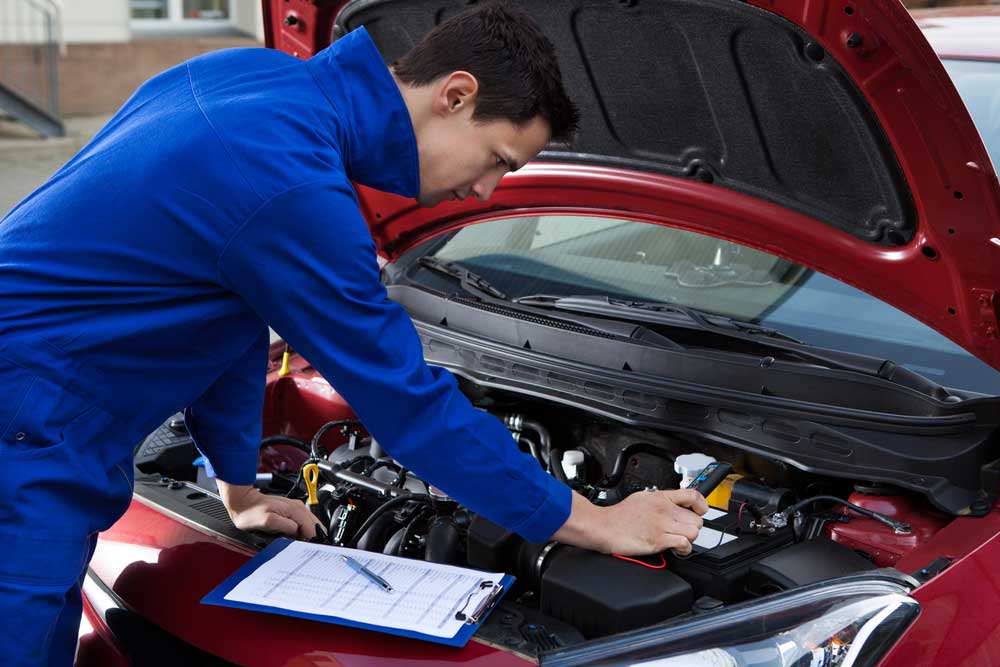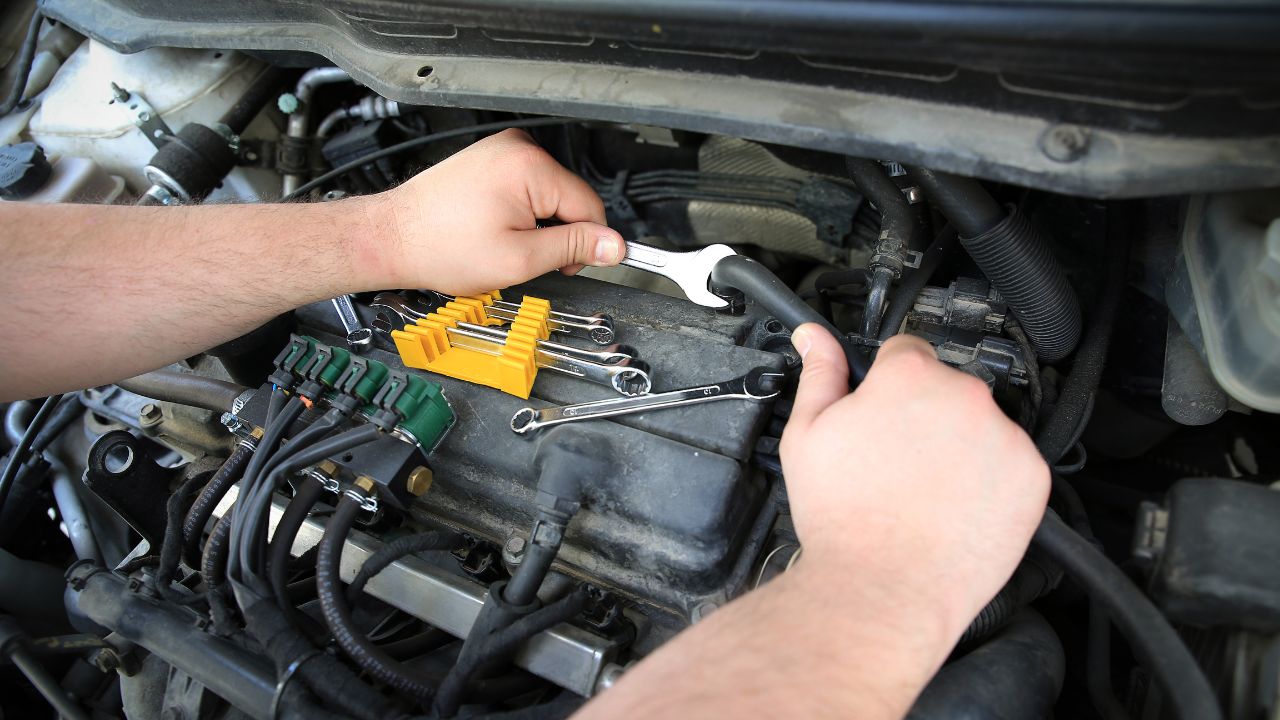
To become a mechanic, you need to know about the requirements for the ASE test. In this article, we'll discuss the training you need to become a mechanic and the job outlook for those who choose to pursue a career in this field. After reading this article, you'll be better equipped to make an informed decision when it comes to attending mechanic school in Hawaii. We hope you enjoy this article. For more information or questions, please get in touch.
ASE test centers in Hawaii
If you're interested in becoming an ASE Certified mechanic, this is the right place for you. There are ASE testing centers in Hawaii. Register in advance to take the ASE exam. Pre-registration paperwork and proper identification are required in order to take the ASE test. Find the address of an ASE test centre by city or zip code.

How to become a mechanical engineer
You need to meet several requirements before you can become a Hawaiian mechanic. These include a high school diploma, GED or equivalent and two years work experience. Applicants should also have a post-secondary degree or certificate. Two different programs are offered in Hawaii to train individuals to become mechanics. These programs are accredited through the National Institute for Automotive Service Excellence ASE (a national certification body).
Hawaii recognizes that a high-school diploma is enough to get some entry-level roles in auto service companies. Basic car maintenance is what students do once they get their hands dirty. This includes performing multi-point inspections, changing and checking oil, inspecting tire pressure, and replacing air filters. Some employers require ASE Certification and a valid driver’s licence, while others may be less strict.
Career outlook for mechanics in Hawaii
The job market for auto mechanics in Hawaii is stable with many available positions. The majority of work is located in Honolulu, but entry-level service technicians and body specialists can find work at a variety of local auto repair shops. Expert master mechanics can find steady work in various dealerships. Diesel mechanics will never run short of work. With a 6.1% annual growth rate, the job outlook for mechanics at Hawaii is bright.

Hawaii has a state license that is required for auto mechanics. This license requires a fouryear degree in diesel engineering. While certification is not essential, most employers prefer certified mechanics. Although training is important, there are many benefits to being a mechanic in Hawaii. First, mechanics in Hawaii are attracted to this state because of its low income rate. A career in this area is an option if your passion is for cars.
FAQ
Is it worthwhile to become a mechanic?
The answer to this question will depend on your goals for life. If you are looking for financial gain, then yes. However, if purpose and meaning are what you seek, then no.
If you don't have any mechanics skills, then there's no point getting into it because you'll just end up wasting time. It's not going make you millionaire. It will not make you famous. It's unlikely that it will change your life.
You'd have to spend years learning how things work. Also, you would need to hire someone else to fix it if it broke down. This is why most people don’t bother. They find something more worthwhile.
You can make a lot of money if you are looking to do well. If you are looking for a fulfilling life, however, then stay clear of the mechanics' industry.
Is it important which college I go?
Not really. There is no difference between colleges in terms of how to get into the automobile industry. Some schools have better programs than others, so you might want to look elsewhere if your goal is something more specialized.
What are the basics of car mechanics?
Auto mechanics don't require any knowledge. Only you need to know how things work. Most people begin by changing brake pads and tires, before moving on to more complicated repairs.
It is important to be able to read and understand diagrams as well as written instructions. You must also be able judge if parts need to replaced or repaired.
It is important that you have proper training and guidance before you attempt to repair vehicles. This is especially true for expensive components, such as transmissions and engines.
Even though you won’t need to know much more about cars, you will still need to have an in-depth understanding of mechanics and physics. This is how you understand the mechanisms behind engines and brakes.
It is also important to remember that you will need to be able to handle many situations. One example is when you could be working on a vehicle involved in a serious crash. You will also need to be able to deal with accidents and breakdowns.
Finally, you need to be willing and able to quickly learn new skills. As well as being able to diagnose problems, you'll need to be able to perform simple maintenance tasks such as tightening nuts and bolts.
Statistics
- According to the BLS, total auto technician employment is expected to exceed 705,000 by 2030. (uti.edu)
- 52% of Mechanics in the United States think their salaries are enough for the cost of living in their area. (indeed.com)
- According to the BLS, the median annual salary for automotive service technicians and mechanics in the United States was $44,050 in May 2020. (uti.edu)
External Links
How To
How to properly diagnose your car for repair
The symptoms of your vehicle are the first thing you need to look at in order to determine whether it is in dire need of repairs. These steps will help you diagnose your car properly.
-
Check engine lights. Check the dashboard light indicators such as the engine light indicator, the oil pressure gauge, the battery light indicator, the coolant temperature gauge, and the RPM gauge. You may have a problem with your vehicle if any of the indicators are flashing for more than a few days.
-
Pay attention to the treads on your tires. Tires with worn treads could cause problems when handling or braking. You should also inspect the wheel treads. They should be smooth and clean. It is best to take off the wheels and remove them. To check the condition of your treads, use a flashlight.
-
Check the level of brake fluid. You should always keep track of the amount of brake fluid in your vehicle. This will ensure that your brakes run smoothly. If your brake fluid level is low they might not work properly when you apply pressure.
-
Test the suspension system. It is common for vehicles to have a suspension system which absorbs shocks or vibrations. This suspension system provides greater control and smoother acceleration and deceleration. A suspension problem can cause your vehicle to feel wobbly and shake uncontrollably. If you are unsure if your vehicle is suffering from a suspension problem, put weight on the front and rear axles to check the movement.
-
Examine the steering column. Steering columns are used to connect the steering wheel to the rest of the vehicle's components. Steering columns can be damaged by accidents. You should replace your steering column if it feels loose or unstable.
-
Observe the exhaust pipes. Exhaust pipes move gases from combustion chamber to atmosphere. If the exhaust pipe is damaged or leaks, harmful fumes can enter your cabin. Additionally, your tailpipe should be fixed immediately if it is bent.
-
Check under the hood. Check under your hood for any unusual or missing components. You could have fluids leaking from the engine. Also, professional technicians should be called if you detect an unusual smell coming out of your engine compartment.
-
Make sure to check the air filter. The outside environment can collect dust and other debris in your vehicle's air filters. A dirty air filter causes your vehicle to run poorly. Replace your air filter regularly.
-
Verify the fan belt. The fan belt that connects your vehicle to the transmission is called the engine fan belt. The engine will not turn if the fan belt breaks. Replacing the belt is simple. You only need a screwdriver or pliers to replace your belt.
-
You should inspect the radiator and hoses. The radiatorhose carries water from your radiator to the engine. It can become cracked or damaged and leak hot liquid onto your engine. The hose can be repaired with a pair or needle-nosepliers, and a wire brush.
-
Make sure you have the windshield wipers checked. Windshield wipers use electricity to clean away snow and rain. If they stop working, streaks could be left on your glass. To fix the problem, simply change the washer fluid.
-
You should inspect the cables. The battery cables supply power to your car's electrical systems. Make sure you disconnect the negative cable before replacing batteries. Failure to do so can damage your alternator.
-
Be sure to check your headlights. The headlights will illuminate the road ahead. It can lead to poor visibility if they aren't working properly. Inspect the bulbs for signs of burnt out.
-
Be sure to check the lights. If you approach other drivers at night, lights will warn them. You may be distracted by the light and end up in an accident.
-
Make sure you check your brakes. Brakes will reduce the speed of your car in case of an accident. If your brakes aren't working properly, you may lose control and crash into other cars.
-
Change your oil. Keep your engine lubricated with oil. It helps prevent metal parts from wearing out too quickly. It is recommended to change the oil each month.